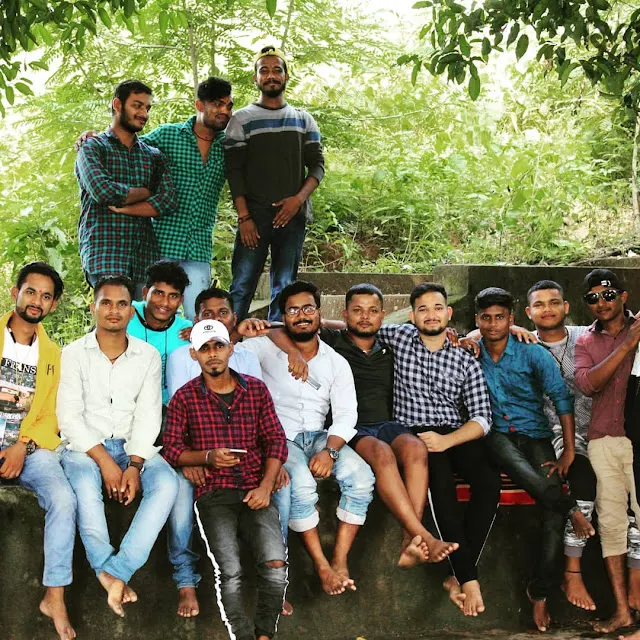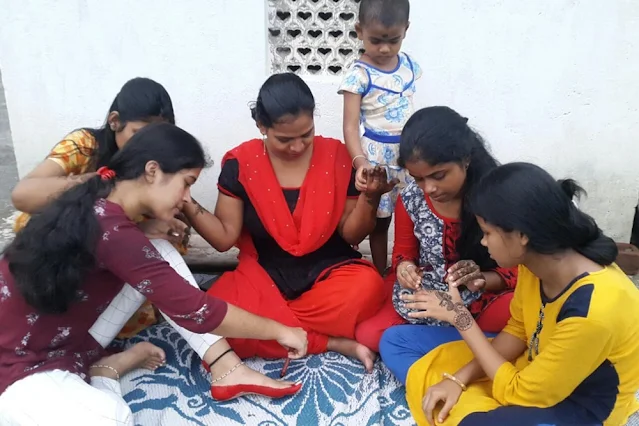About Raja Festival:
- Raja is a festival celebrated in the state of Odisha, India. It is a joyous occasion that marks the beginning of the agricultural season and the onset of the monsoon rains. The festival is dedicated to Mother Earth and the fertility of the land.
- Raja is primarily celebrated by women and girls, who take part in various traditional activities and rituals. The festival lasts for three days and is known for its vibrant and colorful festivities. During this time, women and girls dress up in traditional attire and wear new clothes.
- One of the main highlights of the Raja festival is swinging on beautifully decorated swings, which are set up in villages and towns. The swings are adorned with flowers, mango leaves, and colorful cloth. People enjoy swinging and singing traditional songs, enhancing the festive atmosphere.
- Another important aspect of Raja is the special food prepared for the occasion. Women prepare a variety of delicious dishes using seasonal ingredients like mangoes and milk products. Pitha, a type of traditional cake, is a popular delicacy during the festival.
- Raja also involves the worship of Mother Earth. People offer prayers and perform rituals to show gratitude for the abundance and fertility of the land. This includes decorating the ground with traditional patterns called rangolis and offering fruits, flowers, and other items to the Earth.
- The Raja festival is a time for relaxation, joy, and togetherness. It allows people to take a break from their daily routines and appreciate the beauty of nature. The festival brings communities together, strengthens bonds, and promotes cultural traditions.
you can also read :
The Significance of Rajo Festival:
Raja festival is observed during the month of June, just before the advent of monsoon. The festival celebrates the onset of the agricultural season, when farmers eagerly await the much-needed rains to nourish their crops. Additionally, Rajo is associated with the reverence of womanhood, as it is believed that Mother Earth enters her menstrual cycle during this time, signifying fertility and the cyclic nature of life.
Duration and Timing:
Rajo is a three-day festival that usually falls in mid-June, just before the onset of the monsoon. The festival begins on the first day of the lunar month of Asadha and ends with the onset of the solar month of Mithuna. It is during this time that nature is believed to be at its full splendor, with lush green fields and blooming flowers all around.
Rituals and Traditions:
a. Ambubachi Mela:
The festival commences with the Ambubachi Mela, dedicated to the Hindu goddess Devi Kamakhya. This sacred gathering takes place at the Kamakhya Temple in Guwahati, Assam, and draws devotees from different parts of the country.
 |
| Maa Subhadra |
b. Swing Delight:
The highlight of Rajo festival is the swinging tradition. People, especially women and young girls, enjoy swinging on beautifully decorated swings tied to sturdy trees. The swings are adorned with flowers, colorful fabrics, and mango leaves, adding to the festive ambiance. This swinging activity symbolizes the joy of life, growth, and the rejuvenation of nature.
c. Traditional Cuisine:
Rajo is also a time for indulging in delicious culinary delights. People prepare a variety of traditional dishes like poda pitha (a baked cake made from fermented rice batter and jaggery), chakuli pitha (pancakes made from fermented rice and black gram), and various sweets using freshly harvested seasonal fruits.
 |
| Odia Mitha Pana |
d. Mehendi and Beauty:
Women adorn themselves with beautiful traditional attire like sarees or salwar kameez and decorate their hands with intricate mehendi designs. It is a time for them to embrace their feminine beauty and enjoy the festivities with enthusiasm.
Social Gatherings and Cultural Performances:
During Rajo, people come together to celebrate and share joy. Communities organize cultural events, folk dances, and music performances to entertain and engage the crowd. The famous Odissi dance, with its graceful movements and mesmerizing music, is often showcased during this festival. Additionally, sporting events like Kabaddi, Kho-Kho, and other traditional games are organized, fostering a sense of unity and friendly competition.
 |
| With Friends at Narayani Temple |
 |
| People Playing Different Games |
Festive Shopping:
Rajo is also an occasion for shopping and gifting. Markets bustle with activity as people purchase new clothes, accessories, and traditional handicrafts. It is a time when families come together to buy gifts for loved ones and celebrate the spirit of giving.
Alankara and Adornment:
Rajo is a time when women adorn themselves with intricate traditional jewelry, wear vibrant sarees, and apply beautiful designs of alta (red dye) on their hands and feet. It is a spectacle to witness the elegance and grace with which the women of Odisha deck themselves up during this festival. Women wear vibrant sarees, while men opt for traditional dhoti and kurta. The sight of people adorning traditional attire adds to the festive charm of Rajo.
Conclusion:
The Rajo festival in Odisha is an exquisite celebration that weaves together the essence of tradition, spirituality, and community bonding. It is a time when the people of Odisha immerse themselves in the festivities, rejoicing in the abundance of nature and celebrating the beauty of life. The swinging, the delectable food, the vibrant attire, and the cultural performances all add to the colorful tapestry of this festival. Rajo brings people closer, strengthens relationships, and fills hearts with warmth and happiness. If you ever have the opportunity to visit Odisha during this time, embrace the joyous spirit of Rajo and create memories that will last a lifetime.
It has always been my endeavor that I always help my readers from all sides, if you people have any kind of doubt, then you can feel free to ask me. I will definitely try to solve those doubts.












.png)
![GUNTUR KAARAM | Full Movie Free Download HD [480p, 720p, 1080p,4k]](https://blogger.googleusercontent.com/img/b/R29vZ2xl/AVvXsEhrf2augJYBPyr0rjLCbIcu7M2OcmZEAqr5CO_3yrik_RcXVvlzxGlzxdOG1OtCQ9V8QG9rzUH6yd8fP5WfBmhvN1NI2nal72g7CLD5jx_MkacLGpi4fDMLNyYn_jDldPzXyyVR_WhbXm8uaS7pSKBB_550U5Gwfji8J7MDm9kShyqn6KfiWJq0h0Vib06j/w72-h72-p-k-no-nu/download%20GUNTUR%20KAARAM.webp)

![Aquaman 2 [Aquaman and the Lost Kingdom] || Free Download Dual Audio MP4 || 720p || 1080p](https://blogger.googleusercontent.com/img/b/R29vZ2xl/AVvXsEg7ssLYxywyDL0d4XvTKyc6BsTthcvpTMbp20k3hB2adewG04UBMAAXeJ8lsMVMz-P1rFTHjstfCJ8-4Vb3mYs4t1eriNB288SguyxAj2n3Aoe72h7PoDar310yaTuTroEY5VJQPDOdqobzC3eb7aZeRxLk6zPjQvbSXxtLdoJmkrI4uq7aPY6Jhkq_lrLP/w72-h72-p-k-no-nu/AQUAMAN%202.webp)

![Deadpool 3 | Full Movie Free Download With HD Quality [480p, 720p, 1080p, 4K]](https://blogger.googleusercontent.com/img/b/R29vZ2xl/AVvXsEhH0oy2qpxN-kXtHntJBc8bI5T0sUaNJTA7LI8AJPGAxWcReVCQ1D7ysGiK0nKmi067YYqphhOaqlQxfck9OTTE3ecFH3yIUu3sMO7wlZOPoDslMj0EPHcj3Hp_VDmUL7l3Y2AjLT3N40_0q_oJ_MN4JtqUxp9RS-eBIEGSnVDJWN3PQ-fZIAiEUj6X7QyQ/w72-h72-p-k-no-nu/Deadpool%203-%20quickupdate4you.webp)


0 Comments
Leave Your Comment